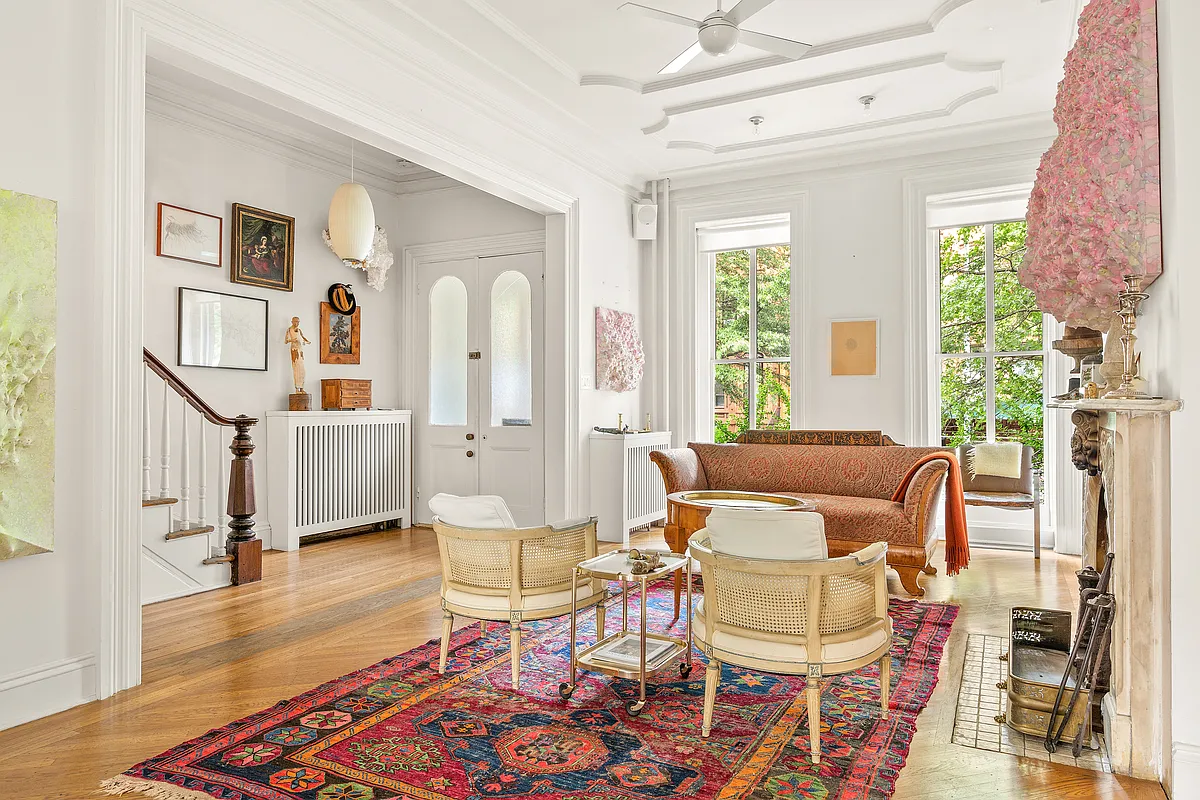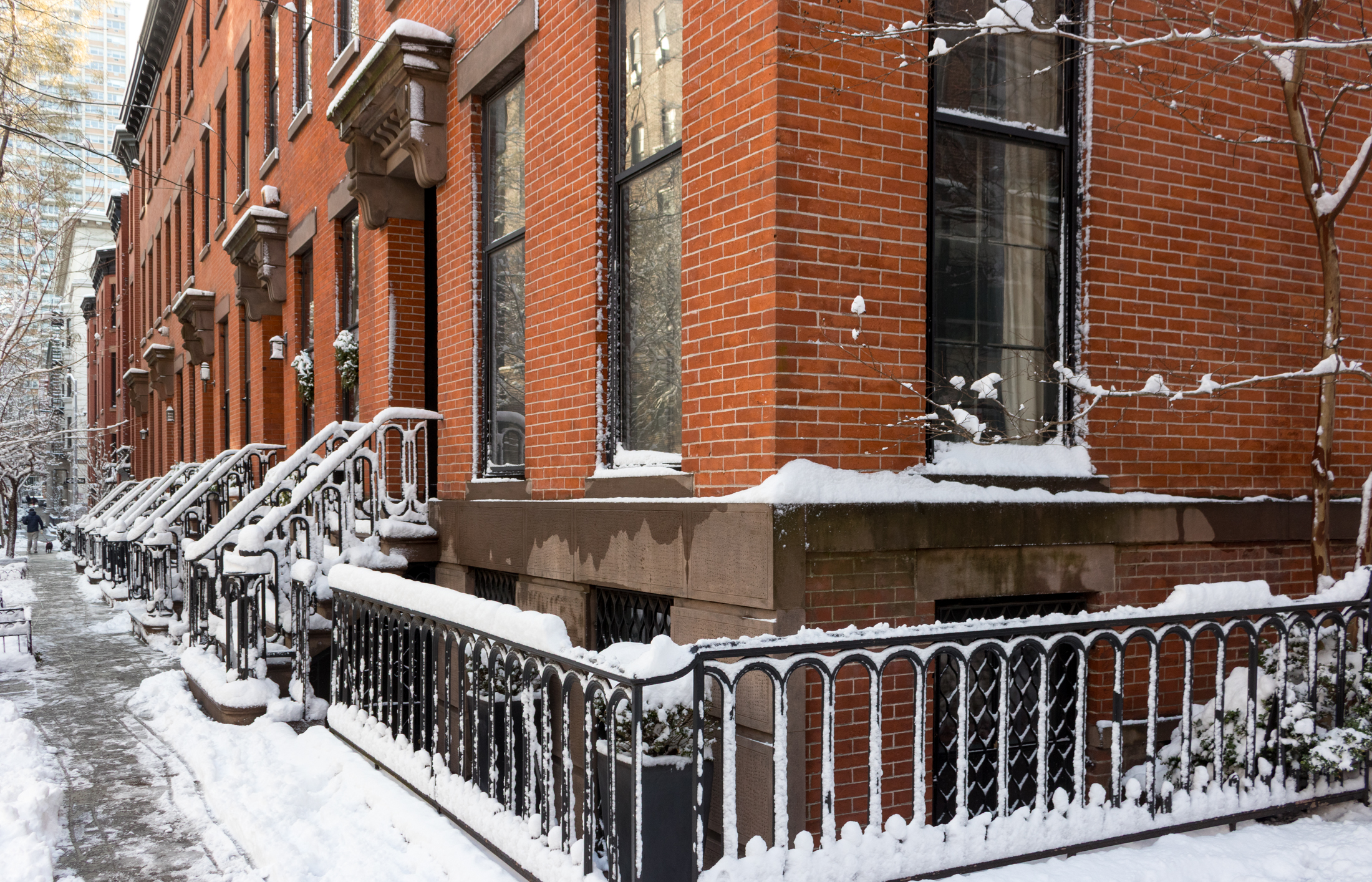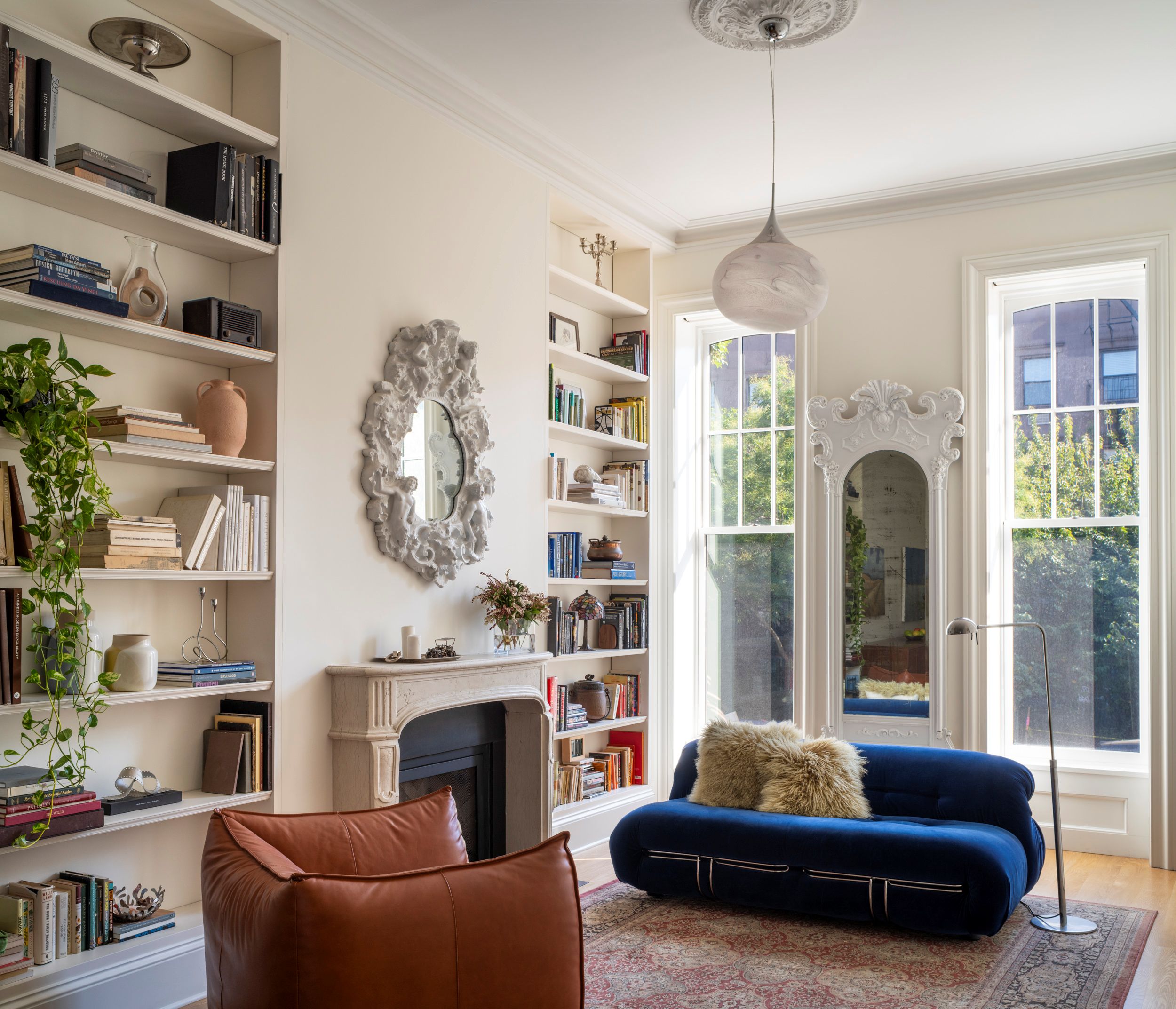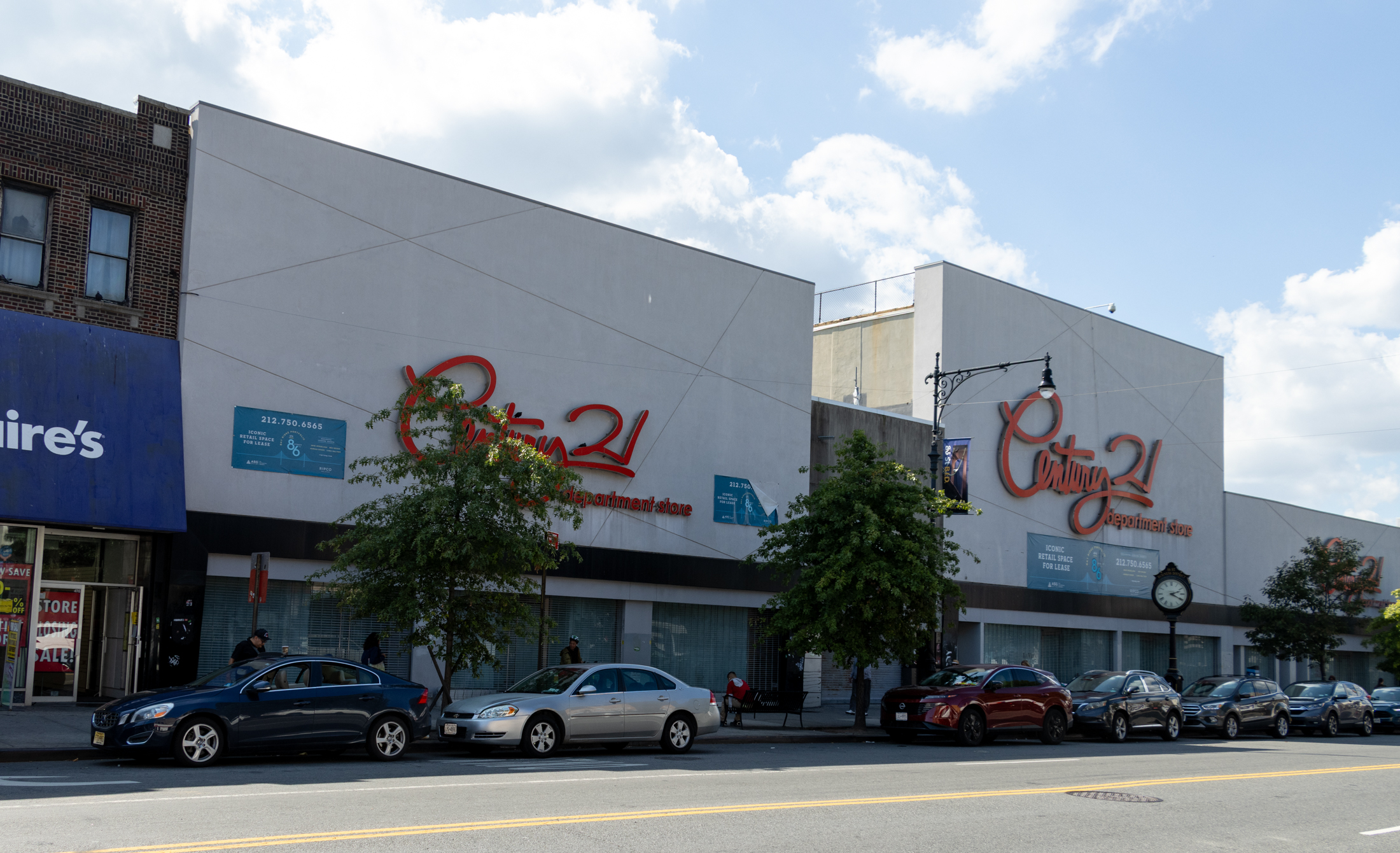Co-op of the Day: 175 Eastern Parkway
We’ve always had a thing for this six-story, 78-unit limestone co-op at 175 Eastern Parkway, whose facade is set at a 45-degree angle to Eastern Parkway right across from the Brooklyn Museum. Apartment 4J, which just came on the market as an FSBO, is a 1,000-square-foot two-bedroom that is attractive in a classic, understated kind…


We’ve always had a thing for this six-story, 78-unit limestone co-op at 175 Eastern Parkway, whose facade is set at a 45-degree angle to Eastern Parkway right across from the Brooklyn Museum. Apartment 4J, which just came on the market as an FSBO, is a 1,000-square-foot two-bedroom that is attractive in a classic, understated kind of way. All things considered, we think the asking price of $595,000 seems pretty reasonable.
175 Eastern Parkway [Craigslist/FSBO] GMAP P*Shark





As usual, the rent vs own debate rages on amidst typical ignorance… on the renters’ side, of course.
First off, renters always seem to ignore the fact that owning a house/apartment allows you to customize it to your liking [to use some rather vulgar examples, how many Wolff ranges or Toto toilets are in the typical low-end Brooklyn rental unit?] & to enjoy features that are typically not available to low-end renters [working fireplace, in-unit w/d’s, private roof access – to name a few I have in the apt I own].
There’s also the issue of investing in furniture, artwork & electronics that are specific to your home’s unique layout. And last, but not least, in a well-established co-op you get to chose your neighbors – no small matter!
Secondly, the above anti-ownership posts are all predicated on a decline in real estate prices – even over a 30 year horizon! Yes, there are costs to ownership – carrying costs, transfer taxes, improvements, repairs & assessments – but there is also the opportunity for real appreciation in a home’s value.
Indeed, the single most ridiculous statement I’ve yet to read on ‘Brownstoner’ was posted by 11:18: that an apartment/house is a “depreciating asset” – like a car! Even if a building is so poorly maintained that it collapses to the ground, the land itself holds much of the value – especially in New York City.
I’m sorry, but Duh! And while we’re at it, please explain why 100 year-old brownstones in PS seem to be holding their value over brand-spanking-new tract houses in Anaheim… could people actually place a positive value on a home’s age? And location?
Finally, if all the renters on this site actually did invest the money they didn’t ‘waste’ on the costs of home-ownership, they certainly wouldn’t be wasting their time posting comments. Yes, I’m sure there’s at least one pajama-clad daytrader out there, but the rest of you are probably doing what I’m doing: typing away while at your 9-5 wage-slave job!
Besides that, did I hear someone say “Bear-Stearns?” I’m sorry, I guess they said “Enron!”
But even if a renter’s stock market gamble does pay off, please factor-in the very high % you’ll pay in capital gains taxes – whereas you wouldn’t pay a penny on the first $250K of home sale profits.
And finally, let’s have one last dose of reality: if the NYC real estate market takes a permanent nose-dive, you can rest assured that the stock market will be in equally bad shape. They both are cyclical, and just as it would be foolish to think bubbles don’t burst, it’s equally moronic to assume that recessions never end.
And when that happens, those who bought places they actually wanted to live in [as opposed to speculators] & places they could reasonably afford [as opposed to 0% down], well, WE will be sitting pretty – thank you very much!
Do 11:47 and 11:42 disagree on anything?
11:30 here. I did indeed misread the chart; putting the opportunity costs on the buyer’s side instead of the renter’s confused me.
Doing it your way makes it hard to see the assumptions, which seem to be that the renter can make only 6% on his saved down payment and nothing on his saved monthly payments while the buyer has no increase/decrease in the price of the apartment. None seem realistic to me.
Put the opportunity costs where they belong, and you can see that with realistic assumptions, the renter starts out way ahead and the buyer only catches up if (1) you assume unrealistic appreciation for the apartment, (2) the renter spends her savings instead of investing them, or (3) the stock market crashes worse than the real estate market.
My way, you can see the real financial decision here. If you are confident that the NYC real estate market is immune from normal supply/demand and bubble rules (so the apt will go up), and you are incapable of saving/investing outside of your home (so renter’s savings earn little or zero), and you know that you won’t have to sell for at least 12 years (so it is ok to omit selling costs) — then it might make financial sense to buy this apartment.
Otherwise, it’s consumption, not investment.
What seems to be wrong here?
11:42 –
5) Chart 2 is a little more complicated. Assume a Purchase Price of $500,000… add the Closing Costs of about $16k, a Mortgage of $516k, Fixed Rate at 6%, for 360 months.
Let me break it down like this:
a) Purchase price of $500k
b) Down payment of $100k (20% down)
c) Mortgage of 6% for $400k
d) Take the $100k and amortize that at 6% as well to account for the usage of it
e) Take $16k of Closing Costs and do the same
f) That adds up to $516k Amortized at 6%
Did I clear that up?
11:26 – Why are you assuming 100% down payment? Did you miss:
5) Chart 2 is a little more complicated. Assume a Purchase Price of $500,000… add the Closing Costs of about $16k, a Mortgage of $516k, Fixed Rate at 6%, for 360 months.
Here… let me write it again:
MORGAGE of $516k. As a student, you would have failed my 1st exam of reading correctly.
11:18 is assuming zero down at a 6% interest rate, that the renter makes nothing on his savings, that the market does not correct, and that the buyer has no sales costs. On those assumptions, it takes 12 years to “break even”.
Try putting in a realistic downpayment, letting the renter earn more than 6% on the saved down payment and the monthly savings, include the likelihood of a price correction, and the possibility of having to move before 12 years (which is way longer than average homeownership), and the spread sheets will come remarkably close to the rule of thumb: if you want to break even, you shouldn’t pay more to own than to rent, assuming a normal downpayment.
11:30 – This is the GUY who did the chart in my posting at 11:18
The Owner (or purchaser) didn’t put down $500k. In my assumption, he puts down 20% or $100k, has $16k of closing costs.
I then used the $116k and added it to the Mortgage of $400k for a total of $516k Amortized at 6% to include a disadvantage of not using the downpayment and closing costs for other investments which can return an average of 6%.
The Renter doesn’t get the $500k. That’s not assumed. The renter can get credit for $116k only if I didn’t include it into the Amortization of the Owner.
Does this make sense to you?
11:26 — I feel sorry for your students. Ignoring opportunity cost is a serious error.
The way you are running your spread sheets, if a buyer paid $5 million cash for this apartment, he would be better off than a renter from year one. If you believe that, I have a really nice bridge to sell you.
11:18 has the spread sheet more or less right for the purchase, but is wrong on the rent side.
The renter has $500,000 that she didn’t use as a down payment accumulating in the stock market or somewhere else. To that she can should add (or subtract) each month the different between rent and (interest + ownership costs).
With that addition, the renter clearly does better under any plausible set of assumptions.